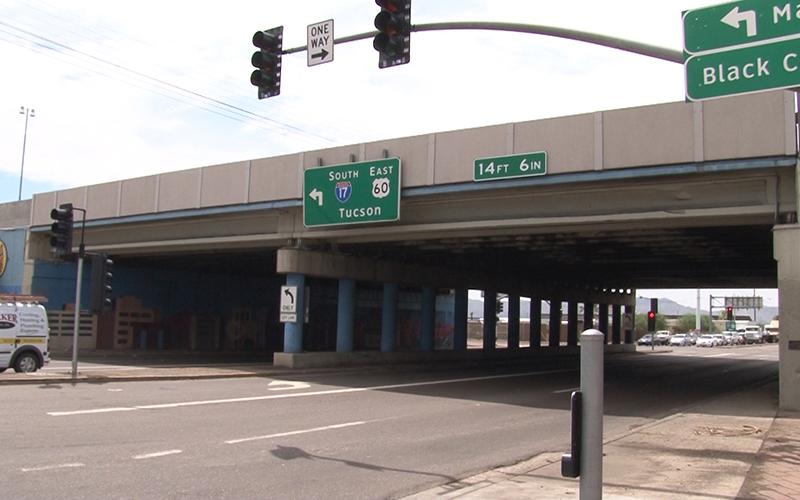PHOENIX – The Interstate 17 bridge that crosses over 19th avenue was among more than 200 bridges in Arizona considered “structurally deficient” in a national safety report but has since been repaired, an ADOT spokesman said.
The designation does not mean the bridges aren’t safe and Arizona overall gets high marks for bridge safety. About three percent of Arizona’s 8,154 bridges are structurally deficient, according to the safety report released earlier this year.
The I-17 bridge over 19th Avenue is the most traveled of the 214 structurally deficient bridges in Arizona. Drivers cross an average of 123,000 times a day.
“It had damaged girders from over-height vehicles striking underneath the bridge,” said Doug Nintzel, an Arizona Department of Transportation spokesman. “Structurally deficient did not mean it was an unsafe bridge.”
“We have a great deal of confidence in our bridges, but you always have to be cautious.”
Arizona is doing better compared to other states, ranking 48 out of 51 in states with structurally deficient bridges.

The 19th Avenue bridge over Interstate-17, cited in a national safety report as “structurally deficient,” has since been repaired. (Photo by Tyler Fingert/Cronkite News)
More than 56,000 bridges nationwide are considered structurally deficient, according to the report from the American Road & Transportation Builders Association.
“If it’s defined as structurally deficient, it means that it’s probably in the plan in the near future to be remedied or to be modified,” said Barzin Mobasher, a civil engineering professor at Arizona State University. “But it shouldn’t stop people from using those structures.”
ADOT repaired the I-17 bridge using carbon fiber strips with a reinforcing polymer to fix the damaged girders, a technology ADOT has never used before.
“It is seen as more of a space-age repair,” Nintzel said.
The repair means the 19th Avenue bridge is no longer structurally deficient.
“We think the carbon-fiber repairs are effective, can extend the lifespan of structures and can be done in much less time than other repair methods,” David Eberhart, an ADOT bridge engineer, said in a news release. “We’re likely to use it again if and when repairs are needed.”